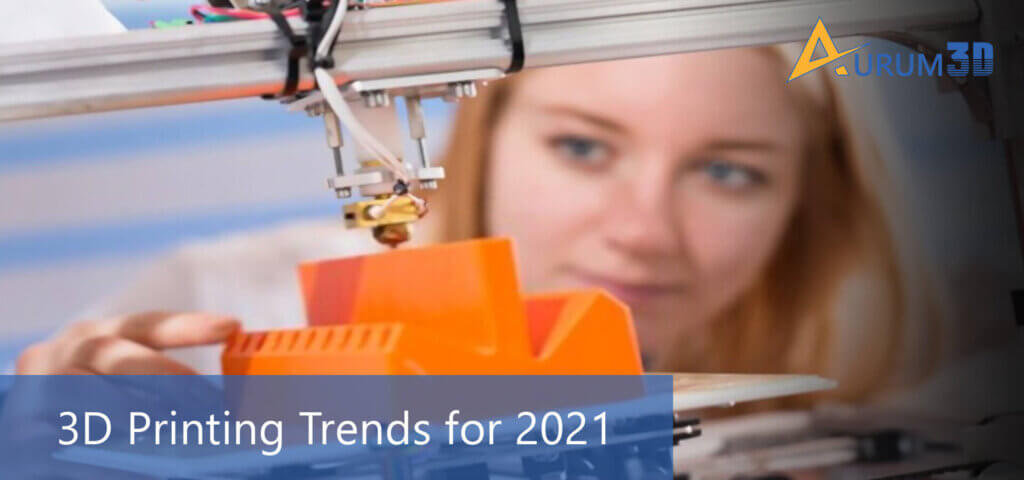3D printing technologies have been transforming many industries – manufacturing, architecture, construction, automotive, aerospace, and healthcare. Many homeowners these days explore ways to 3D-print houses instead of constructing houses. Likewise, many automotive companies carry out research and development (R&D) activities to 3D-print vehicles instead of manufacturing vehicles.
At the same time, the National Aeronautics and Space Administration (NASA) plans to build a lunar base using next-generation 3D printers by converting moon dust into concrete-like materials. 3D printing technologies have been evolving continuously. Likewise, the global 3D printing market has been expanding steadily and consistently.
According to a market analysis report released by Grand View Research,
“The global 3D printing market size was valued at USD 11.58 billion in 2019 and is expected to expand at a CAGR exceeding 14% from 2020 to 2027. Globally, 1.42 million units of 3D printers were shipped in 2018 and this number is expected to reach 8.04 million units by 2027.”
Enterprises from various sectors will leverage 3D printing to curtail production time and cost. However, the application and use cases of 3D printing will vary across industries. Also, the 3D printing trends will change from time to time. We have collected information from diverse sources to identify some of the trends that will drive and transform the 3D printing industry in 2021.
8 Important 3D Printing Trends to Look Out for in 2021
Innovative Concepts
Most enterprises these days leverage 3D printing technologies to save both time and resources by experimenting with innovative concepts and out-of-box ideas. In 2021, enterprises from various industries will continue using 3D printing to facilitate rapid prototyping, promote production process agility, and experiment with new materials. The decision-makers will further use industrial 3D printers to evaluate the pros and cons of every fresh idea or unique concept by 3D-printing multiple versions of the product, model, structure, or object.
Complex Prototyping
One of the common use cases of 3D printing is rapid prototyping. Most enterprises leverage 3D printing technologies to evaluate ideas and concepts by creating multiple versions of the prototype on demand. The emergence of metal 3D printing will create opportunities for manufacturers in 2021 to prototype complex commercial products rapidly without investing in extra resources. For instance, the aerospace companies will leverage metal 3D printing to prototype complex components like turbine blades and impellers rapidly while experimenting with various materials.
Printing Customization
The leading automobile manufacturers already leverage 3D printing technologies to customize vehicles and speed up replacement part delivery. Also, they experiment with various 3D printing technologies to boost the performance and efficiency of a vehicle by reducing its weight. In 2021, the enterprises will focus on saving time and resources by customizing the 3D printing process. They will align every application or use case to a specific 3D printing process to curtail both time and cost. Hence, 3D printing customization will emerge as one of the important additive manufacturing trends in 2021.
Co-creation
According to Wikipedia, “Co-creation, in the context of a business, refers to a product or service design process in which input from consumers plays a central role from beginning to end.” Many industry experts believe that co-creation will remain one of the important 3D printing trends in 2021. Many manufacturers will focus on improving customer experience and satisfaction through better collaboration between software, hardware, and service providers. Also, they will leverage 3D printing technologies to design and build highly-optimized products by involving customers in the processes of planning, prototyping, and evaluation.
Selective Laser Sintering (SLS)
The enterprises will experiment with various 3D printing technologies in 2021. But a market forecast report released by Mordor Intelligence suggests that Selective Laser Sintering (SLS) will remain the most preferred 3D printing technology in the near future. Most enterprises will opt for SLS 3D printing technology to produce prototypes and functional parts with complex geometries and superior mechanical properties. SLS will make it easier for users to produce multiple products simultaneously while supporting batch production.
New Material Compositions
3D printing technologies help enterprises from various sectors to experiment with ideas and concepts by reducing both material consumption and wastage. Many enterprises further leverage 3D printing technologies to experiment with a wide range of materials and filaments. In 2021, enterprises from specific sectors will 3D-print customized objects and items using completely different materials. For instance, the healthcare providers will use advanced 3D printers to produce bones using ceramic-based ink that contains living cells.
Consultancy Services
Unlike large enterprises, small businesses and startups lack the skill and resources required to leverage 3D printing technologies fully. Many small businesses and startups avail of professional 3D printing and consultancy services to meet their precise requirements. In 2021, the demand for professional 3D printing services will surge with more and more businesses adopting this additive manufacturing technique. Also, most businesses will avail of 3D printing consultancy services to create use cases by overcoming constraints related to knowledge and resources.
Automation
Many enterprises leverage 3D printing to simplify and accelerate the development of customized robotic solutions. At the same time, many enterprises explore ways to automate the 3D printing process by deploying robots. They use advanced artificial intelligence (AI) algorithms to design robots that can monitor the 3D printing process accurately and identify the bottlenecks early. The AI-powered robots monitor machine functionality, material supply, and post-process without human intervention. In 2021, many enterprises will automate the 3D printing process completely by integrating AI and robotic solutions.
Supply Chain Digitization
Many manufacturers these days 3D-print replacement parts and spares to eliminate the need to manage supply chains. The 3D printing technologies create opportunities for manufacturers to digitize the supply chain. The manufacturers will divide the supply chain into multiple segments based on specific products or processes. The digital supply chain will make it easier for manufacturers to bridge the supply gap while leveraging benefits in terms of both time and cost.
3D printing technologies have been evolving consistently. Likewise, the 3D printing trends change regularly. The manufacturers can leverage the benefits of this additive manufacturing technique fully only by tracking and adopting the emerging trends in the 3D printing industry proactively. Our experts have been researching the rapid changes in the world of 3D printing, here are the 3D printing trends for 2022.
About Aurum3D
Aurum3D is one of the leading 3D printing companies in Bangalore. We have been working with various new age areas like Drone manufacturing and Electric vehicle manufacturers in multiple areas like prototyping and custom 3D printing. You can get in touch with us for your custom requirements in electric vehicle manufacturing.
[This article has been updated in 19th December 2021]

